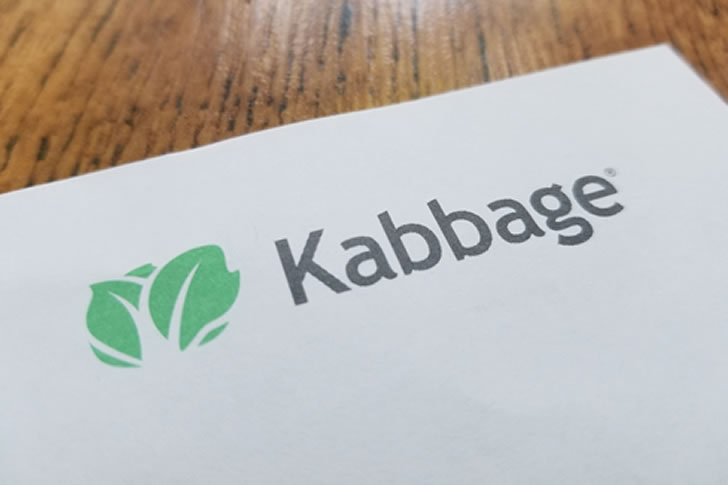Guide to Securing the Best Business Loans in 2024
In the entrepreneurial world, obtaining a business loan can be a crucial step towards growth and sustainability. Whether it’s for starting up, expanding, or maintaining operations during tough times, understanding the nuances of business loans is essential.

Types of Business Loans
1. Term Loans Term loans are among the most common forms of business financing. They provide a lump sum of cash upfront, which businesses repay with interest over a predetermined period. Terms can range from short (under a year) to medium (1-3 years) and long-term (more than three years), depending on the lender and the purpose of the loan.
2. SBA Loans The Small Business Administration (SBA) offers several loan programs designed to support small businesses that might not qualify for traditional bank loans. The SBA 7(a) program, for instance, is popular for its flexible terms and usage, offering up to $5 million with terms that can extend up to 25 years for real estate and 10 years for equipment or working capital.
3. Business Lines of Credit Unlike term loans, lines of credit provide businesses with a pool of funds that they can draw from as needed. This type of financing is ideal for managing cash flow and unexpected expenses. Interest is typically only paid on the amount drawn, making it a flexible and often economical option.
4. Equipment Financing This type of loan is tailored for the purchase of equipment needed to operate your business. The equipment itself often serves as collateral for the loan, which can help reduce the interest rates.
5. Invoice Financing Invoice financing allows businesses to borrow money against the amounts due from customers, providing immediate working capital to improve cash flow. This can be particularly useful for businesses with long invoice cycles.
Eligibility Criteria
The eligibility for a business loan varies by lender, but typically includes an evaluation of the following:
- Credit Score: A good personal credit score is often essential, with most banks requiring scores above 680.
- Business Age: Many lenders require businesses to have been in operation for at least two years.
- Annual Revenue: Lenders often have minimum revenue requirements to ensure that businesses can repay their loans.
- Profitability: Being profitable demonstrates to lenders that a business is financially viable.
- Debt-to-Income Ratio: This ratio helps lenders evaluate a business’s ability to manage and repay additional debt.
Alternative Financing Options for Lower Credit
- Microloans: Organizations like the SBA offer microloan programs specifically designed to help small businesses and startups, which might be more forgiving of credit issues.
- Merchant Cash Advances: This is an option for businesses with consistent credit card sales. It’s based on sales projections rather than credit scores, providing a cash advance against future sales.
- Invoice Financing: If your business has outstanding invoices, invoice financing allows you to borrow against the value of these invoices. Lenders focus more on the reliability of your invoices being paid than your credit score.
- Equipment Financing: For purchases of new equipment, this financing option allows the equipment itself to serve as collateral, which can mitigate the lender’s risk and lessen the emphasis on credit history.
How to Apply for a Business Loan
1. Prepare Your Documents Lenders will typically ask for a variety of documents, including business and personal tax returns, financial statements, business licenses, and a business plan. Having these documents ready can speed up the application process.
2. Understand Your Needs Before applying, understand why you need the loan and how much you need to borrow. This clarity can help in selecting the right type of loan and lender.
3. Compare Lenders Interest rates, terms, and fees can vary significantly between lenders. Compare offers from multiple lenders to find the best rates and terms that suit your business needs.
4. Consider the Timing The timing of your application can impact your eligibility and needs. Applying when your business finances are solid can improve your chances of approval.
Tips for Quick Loan Approval
- Prepare Documentation: Have all necessary documents ready before applying. This includes financial statements, tax returns, business licenses, and a detailed business plan.
- Apply for SBA Express Loans: The SBA offers an Express loan program that promises a response to your application within 36 hours. These loans are ideal for businesses needing quick approvals and cater to those who meet the SBA’s eligibility criteria.
- Utilize Fintech Solutions: Financial technology companies often offer faster approval processes than traditional banks. These platforms use automated algorithms to assess creditworthiness, significantly speeding up the loan approval process.
- Maintain a Relationship with Your Bank: Having an existing relationship with a bank can facilitate quicker loan processing. Your familiarity with the bank’s processes and their familiarity with your financial history can work in your favor.
- Be Responsive: Once you’ve applied, be on standby to answer any queries from the lender. Quick responses can help maintain the momentum of your loan application process.
Options for Quick Cash
- Business Lines of Credit: One of the most flexible financing options, a business line of credit allows companies to draw funds up to a certain limit and pay interest only on the amount used. This can be particularly useful for managing cash flow and unexpected expenses.
- Short-term Business Loans: These loans are designed for quick processing and typically have a term of 12 months or less. They are ideal for businesses that need cash immediately but expect to repay quickly.
- Merchant Cash Advances: This financing option provides businesses with a lump sum in exchange for a portion of future sales, usually taken directly from credit card transactions. While expensive, the approval process is fast, and funds can be available within days.
- Invoice Factoring: Businesses can sell their outstanding invoices to a factoring company at a discount to get immediate cash. This is an effective way to unlock cash tied up in unpaid invoices without waiting for customer payments.
- Online Lenders: Many online platforms specialize in quick loan approvals and disbursements, often within a few business days. They are a viable option for businesses that may not qualify for traditional bank loans or need cash more rapidly than banks can provide.
FAQs on Securing Business Loans
- Q: What is the most common mistake when applying for a business loan?
- A: Not comparing enough options or fully understanding the terms and conditions.
- Q: How can I improve my chances of getting approved?
- A: Strengthen your business plan, improve your credit score, and offer collateral if possible.
- Q: Are online lenders a viable alternative to traditional banks?
- A: Yes, online lenders can offer more flexible terms and quicker approval processes.
Analyzing Loan Terms: A Visual Guide
Here is a comparative chart detailing various loan types, their average interest rates, approval times, and typical repayment terms across different lenders as of 2024:
| Loan Type | Average Interest Rate | Approval Time | Typical Repayment Terms |
|---|---|---|---|
| Term Loan | 6-8% | 1-2 weeks | 1-5 years |
| SBA Loan | 5-7% | 2-3 weeks | 5-10 years |
| Line of Credit | 7-9% | 1 week | Revocable |
| Merchant Cash Advance | 18-20% | 24-48 hours | 3-12 months |
This table provides an overview of what to expect in terms of costs, timeframes, and repayment flexibility when considering different types of business loans in 2024.
Tips for Negotiating Better Loan Terms
- Communicate clearly what you need and why you need it.
- Provide lenders with proof of steady business performance.
- Consider a shorter loan term for better interest rates.
- Be willing to negotiate on fees and collateral requirements.
Compare Business Loans
When comparing business loans, it’s essential to consider several key factors that can impact both the short-term and long-term financial health of your business. Here are some critical aspects to evaluate:
- Interest Rates: This is often the first thing business owners look at. Lower interest rates mean lower total cost of borrowing, but be sure to consider whether the rate is fixed or variable.
- Loan Terms: The length of the loan term can affect your monthly payments and total interest cost. Shorter terms generally have higher monthly payments but lower total interest, while longer terms spread out the payments but increase total interest.
- Fees and Penalties: Look out for upfront fees, processing fees, and penalties for late payments or early repayment. These can add up and significantly affect the cost of your loan.
- Flexibility: Some loans offer more flexibility than others, such as the ability to draw funds from a line of credit as needed or to defer payments during slow periods.
- Lender Reputation: Choose a lender with a good reputation for customer service and reliability. Reading reviews and seeking recommendations can provide insights into a lender’s client handling.
Loan Comparison Tools: Many online tools and websites allow you to compare different business loans side by side. These platforms can help you filter by loan amount, term, and purpose, making it easier to find the best options for your specific needs.
Where to Find Low-Interest Business Loans
- Traditional Banks: These institutions often offer the lowest interest rates for business loans, although their eligibility criteria can be stringent.
- Credit Unions: Being member-focused, credit unions typically offer lower interest rates than commercial banks. They are particularly worth considering if the business owner is a member.
- SBA Loans: The U.S. Small Business Administration facilitates loans that typically have lower interest rates compared to conventional bank loans. The SBA 7(a) and 504 loan programs are popular for their reasonable rates and long repayment terms.
- Online Lenders: While generally offering higher interest rates than banks, some online lenders provide competitive rates, especially for well-qualified borrowers or specific loan products designed to be low-risk.
Small Business Funding Options
Small businesses have several avenues to explore when it comes to funding. Here’s a breakdown of some popular options:
- Traditional Bank Loans: These are typically the most sought-after due to their lower interest rates and more favorable terms. However, they also have stringent eligibility requirements.
- Microloans: Designed for smaller startups or businesses that need smaller amounts of funding, microloans are often provided by non-profits or government agencies and have more lenient eligibility criteria.
- Online Lenders: For those unable to secure traditional bank financing, online lenders may be a good alternative. They usually process applications quickly and have less stringent requirements, but often at higher interest rates.
- Crowdfunding: This option allows businesses to raise small amounts of money from a large number of people, typically via the internet. It’s a good way to raise capital without giving up equity or incurring debt.
- Angel Investors and Venture Capitalists: These are individuals or firms that provide capital in exchange for equity in the company. While they also offer guidance and expertise, they are suitable for businesses that anticipate rapid growth.
- Government Grants: Some government programs offer grants to small businesses in specific industries or regions. Grants do not require repayment, making them an attractive option, though they can be highly competitive and restrictive in use.
Outstanding Organizations In the United States
- Northeast – Citizens Bank: Known for offering a variety of commercial loans with competitive rates and extensive support to businesses in the Northeast.
- Mid-Atlantic – M&T Bank: A preferred lender for many businesses in the Mid-Atlantic, offering customized financing solutions and SBA loans.
- Southeast – SunTrust Bank: Now part of Truist, SunTrust has a strong reputation for providing comprehensive loan services to businesses in the Southeastern U.S.
- Midwest – Huntington National Bank: Renowned for its small business loans, Huntington helps Midwestern businesses grow with flexible lending options.
- Southwest – Texas Capital Bank: This bank provides specialized business loans that cater to the unique needs of companies in the Southwest.
- West – Bank of the West: Offers a range of financial products tailored to small businesses in the Western U.S., including term loans and lines of credit.
- Northwest – U.S. Bank: Known for its strong presence in the Northwest, offering both conventional business loans and SBA options.
- Central – Great Plains National Bank: A key player in Central U.S., known for its personal service and deep understanding of local business needs.
- Alaska – First National Bank Alaska: The go-to bank for businesses in Alaska, offering local expertise and specialized loan products.
- Hawaii – Bank of Hawaii: Offers comprehensive business loans with deep local market understanding, helping Hawaiian businesses flourish.
These institutions not only provide financial resources but also contribute to regional economic development by supporting local businesses.
Conclusion
Business loans are a pivotal resource for companies looking to grow or maintain operations. By understanding the different types of loans available and preparing thoroughly for the application process, businesses can secure the financing they need to succeed. Always consider the full cost of the loan and ensure it fits within your business’s budget and growth strategy.
With the right approach, a business not only secures the capital it needs but also lays a solid foundation for future financial health and stability.
References
- https://www.federalreserve.gov/releases
- https://www.forbes.com/advisor/business-loans/small-business-loans-guide/
- https://www.investopedia.com/best-small-business-loans-5071582
This comprehensive guide integrates various analytical tools, including bullet lists, a Q&A section, and visual charts, to equip you with a well-rounded understanding of securing business loans in the current financial climate. Use these strategies and insights to navigate the loan application process effectively and boost your business’s growth potential in 2024.











Recent Comments